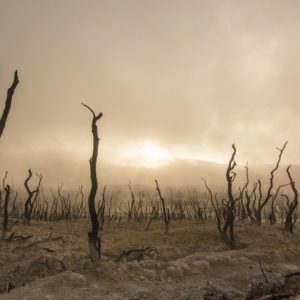Climate Science II- Weather Prediction helps you learn about how to understand weather patterns, which will help you understand how to forecast weather and atmospheric conditions.
You will learn to understand long and medium term forcasting and weather patterns.
This course is ideal for professional development, for people who rely on having a greater understanding of weather patterns, including farmers, horticulturalists, or people who spend a lot of time outdoors for their hobbies or interests.
Lessons in this course:
Lesson 1: What to Measure
- What is Weather Forecasting?
- Weather Warnings
- Weather forecasting
- Impacts to people
- Impacts for farming
- Weather factors
- Cloud cover
- Minimum temperature
- Maximum temperature
- Dry bulb temperature
- Wet bulb temperature
- Wind speed
- Wind direction
- Precipitation
- Absolute humidity
- Relative humidity
- Dew point
- Mean sea level pressure
- Station level pressure
- Water vapour pressure
- UV index
Lesson 2: Tools for forecasting
- Equipment
- Weather stations
- Weather balloons and drones
- Satellites
- Recording, Storing and Processing Data
- High Performance Computers
- Numerical Weather Forecasting
- What should be in a minimal weather station?
Lesson 3: Types of Forecasting
- Persistence Forecasting
- Climatological Forecasting
- Use of a Barometer
- Looking at the Sky
- Nowcasting
- Numerical Weather Prediction models
- Statistical Forecasting
- Analogue Forecasting
- Ensemble Forecasting
Lesson 4: Weather Models
- Introduction
- Weather models data sets and global weather models
- ECMWF
- GFS
- How Weather Models are Built
- Grid size
- Problems with the Grid
- How do parameterisations work?
- Model Uncertainty
- Data Assimilation
- Mesoscale/Regional models
- The Human Element of Weather Modelling
Lesson 5: Predicting Temperature
- Diurnal temperature variation
- Forecasting maximum temperature
- Forecasting minimum temperature
- Effect of snow cover
- Severity of frost
- Forecasting grass minimum temperature
- Minimum temperature on road surfaces
- Heat Stress Determination
- Urban Heat Island
Lesson 6: Predicting Rain
- Introduction
- Convection and Showers
- Forecasting convective cloud
- Forecasting showers
- Forecasting cumulonimbus and thunderstorms
- Layer clouds and precipitation
- Layer cloud formation
- Condensation trails
- Orographic rainfall
- Formation of stratocumulus
- Precipitation associated with layered clouds
- Snow
Lesson 7: Air Conditions
- Introduction
- Air Quality
- Air Pollution and Its Effect on Climate
- Carbon Dioxide
- Methane
- Airborne Chemicals
- Air Particles
- Pollen and Allergies
- Radon
- Wind and Turbulence
- Mechanical Turbulence
- Thermal Turbulence
- Frontal Turbulence
- Wind shear
- Humidity
- Visibility
Lesson 8: Practical Applications
- Introduction
- Severe Weather Alerts
- Aviation
- Marine
- Agriculture
- Forestry
- Utility Companies
- Private Sector
- Military
- Medicine and Human Health
- Waves and surges





